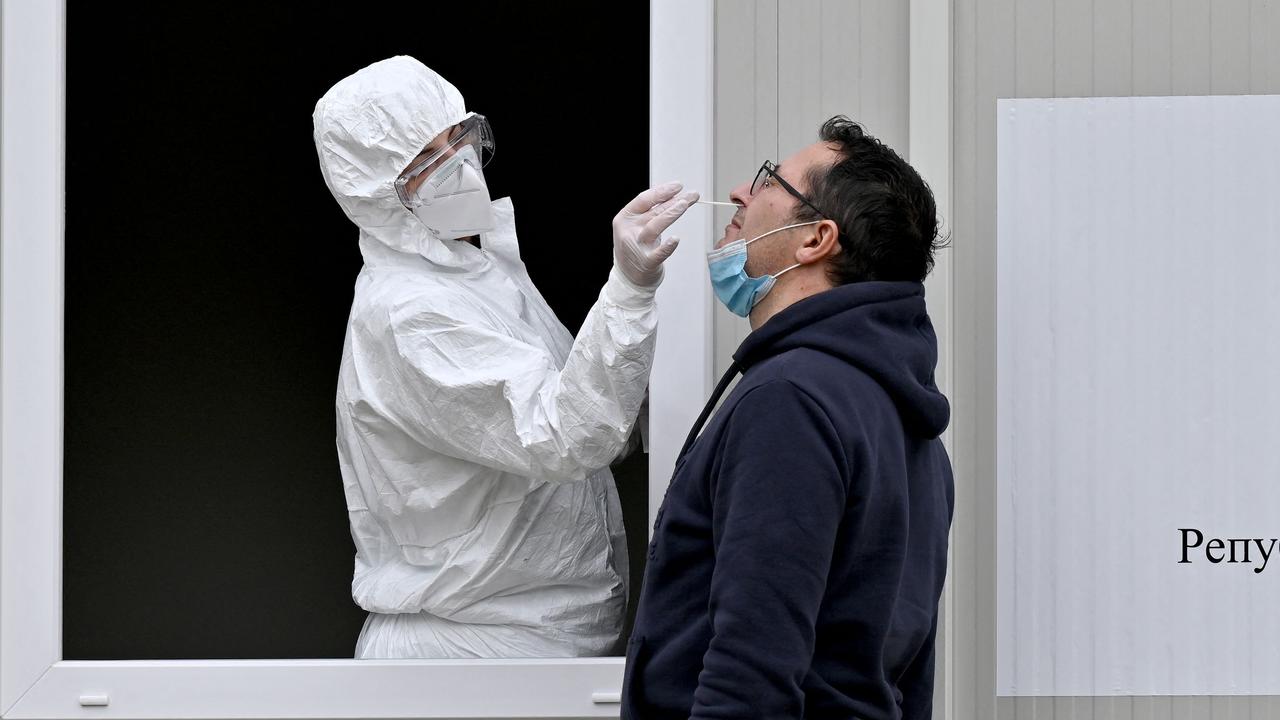How the trans-Tasman bubble could affect states with strict borders controls
Australians could be skiing in New Zealand before Queensland opens its borders as the Federal Government pushes ahead with plans for a trans-Tasman bubble without the Sunshine State.
Coronavirus
Don't miss out on the headlines from Coronavirus. Followed categories will be added to My News.
- UV lit trains to kill COVID-19: How public transport is changing
- Fiji’s push for Australian ‘travel bubble’
Australians in New South Wales, Victoria and Australian Capital Territory could soon be skiing in New Zealand ahead of surfing in Queensland if the Sunshine State’s strict border controls remain when the “travel bubble” across the Tasman gets the green light.
The Morrison government noted on Monday “the reluctance of other states open(ing) up their domestic borders shouldn’t become an obstacle to progress” with the trans-Tasman bubble, which could include travel ‘bubble’ agreements with New Zealand, Pacific Island nations, Japan, Taiwan and South Korea.
Federal Trade Minister Simon Birmingham’s comments come as he pressures Queensland to open its borders, raising the prospect of New Zealand travel excluding the Sunshine State.
“New Zealand is obviously the first, and right now only, international market that we could safely agree to open up to,” he said.
However, New Zealand Prime Minister Jacinda Ardern dismissed the idea, saying she
expects Australian state borders to re-open before the trans-Tasman bubble is established.
“The states haven’t opened up to each other yet,” she told Radio New Zealand.
“Obviously I would expect to see some of those issues resolved before we’d see them necessarily opening up to New Zealand and you can understand why.
“People want to be able to travel internally in Australia before they’d expect to be able to come across the ditch.”
From June 1, interstate travellers are being welcomed to holiday in NSW, when travel restrictions in the regions relax.
However, apart from Victoria and the ACT, all other states and territories are maintaining a hardline approach, fearing a second wave of coronavirus infections.
Queensland Premier Annastacia Palaszczuk said she would consider lifting travel restrictions at the end of the month, but warned the state’s borders could be shut until September.
“I will not put Queenslanders at risk,” she said.
TRAVEL BUBBLE FLOATED AS STATE PREMIERS CRITICISE EACH OTHER
A new travel bubble is being floated across Australia as cases of coronavirus remain low and state premiers continue to criticise each other for refusing to open their borders.
Canberra Airport chief executive Stephen Byron suggested the idea of a new bubble as the ACT has gone for nearly three weeks without a new COVID-19 case.
He told ABC there could be a new bubble allowing domestic travel between the ACT, South Australia and Queensland without a 14-day quarantine period.
“There are so many jobs at stake … right through the industry, tourism industry, the accommodation industry and everything. We are a COVID-free place,” he told ABC News Breakfast.
“Canberra has not had any COVID for 17 days. And Queensland and South Australian premiers don’t want to open up to places where there is COVID. We are saying that we are free of it right now.
“It is a good first incremental step to start flights to Canberra now between Adelaide and also Brisbane to Canberra.
“It’s not like just ramping up a cafe and turning up and changing from takeaway to dine-in again within 24 hours. The aviation industry needs a very clear timetable with firm dates.”
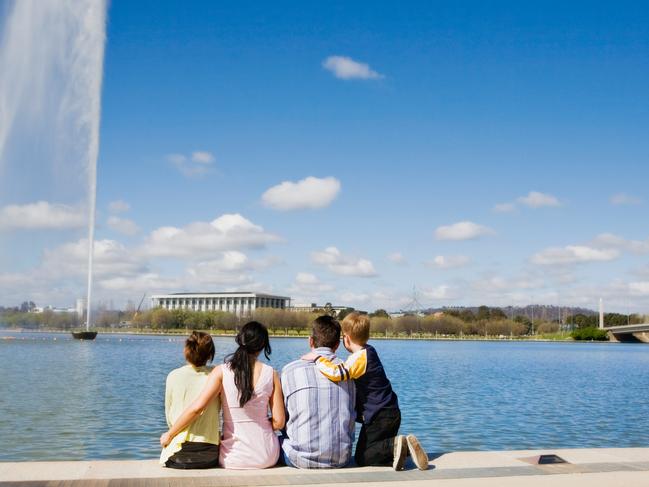
“We need to know that we can restart these flights in a matter of weeks. Ideally by June 8. And certainly be well and truly up and running for the school holidays on July 1.”
Mr Byron said Australians may holiday to New Zealand ahead of a local destination.
“We have got to get back to 20 per cent and then ideally 50 per cent during July with flights during the school holidays,” he said.
“If the state premiers hold the line, then I think what you’ll see is that the trans-Tasman bubble with flights from the eastern seaboard through to New Zealand opening up from about July 1.
“That too needs to be a target so that we can get more activity in the tourism industry, more jobs and more businesses reopening.”
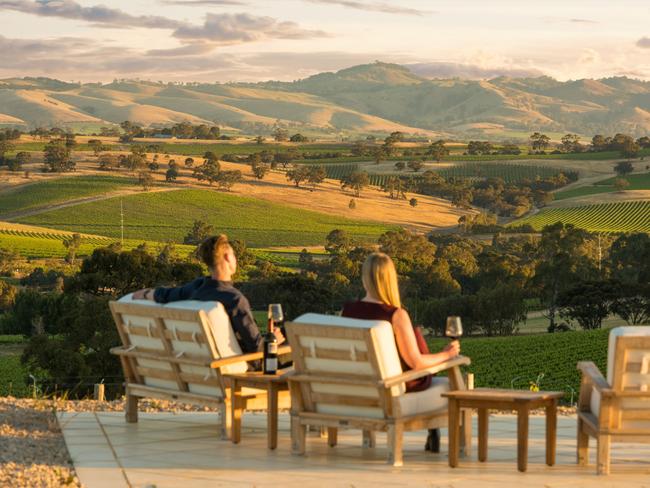
South Australian Premier Steven Marshall said he was “absolutely” considering the proposal.
“We are considering all of those options. I think that is a good suggestion. We are considering that at the moment,” he said.
Deputy Prime Minister Michael McCormack has linked the future of Australian airlines to lifting domestic travel bans as bickering over state borders continues.
The federal government is pressuring state and territory leaders to lift hardline restrictions to boost the crumbling tourism and aviation sectors.
Mr McCormack, who is the federal transport minister, said Australia had successfully kept cases and mortality rates low.
“If we do want a domestic airline to continue and to resume very quickly, then one way of doing it is to ease those border restrictions,” he told the ABC on Friday.
CHANGES TO THE WAY WE FLY
Local and international airlines are taking unprecedented measures to protect passengers and crew from the new coronavirus as they prepare to get back into the air.
As the industry undergoes its biggest raft of changes since 9/11 ushered in new security measures, despite a call for common standards, some nations are applying their rules just to airlines registered in their country, while others are applying them to foreign carriers.
There are many changes such as business-class meals, once a selling point for premium carriers hiring celebrity chefs, being reduced to pre-packaged items on carriers including Emirates, Air Canada and British Airways.
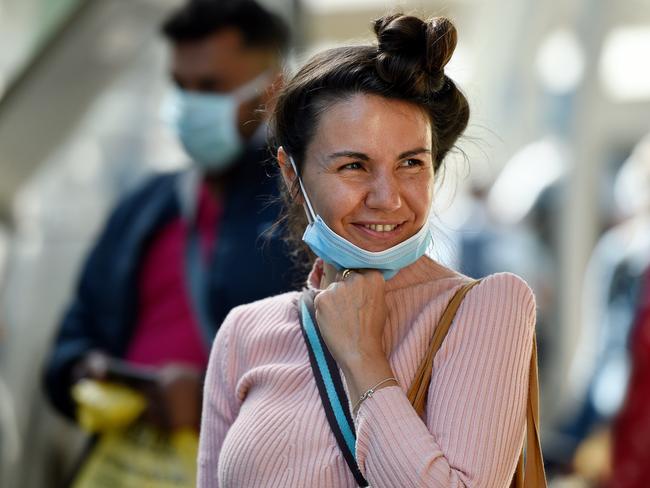
Stumbling onto a plane full of the flu or a bad cold might no longer be an option.
“It’s going to be socially less acceptable for someone to get on an airplane who clearly isn’t well,” JetBlue Airways Chief Executive Robin Hayes said.
“Airlines have to figure out how they’re going to respond to that in a way that still allows them to be profitable, but also recognise that you don’t want people on the airplane that are ill.”
And in heartbreaking news for travellers who love to leap to their feet once the final ding is heard on arrival at the gate, getting off the plane at the end of the flight could take even longer than in the past.
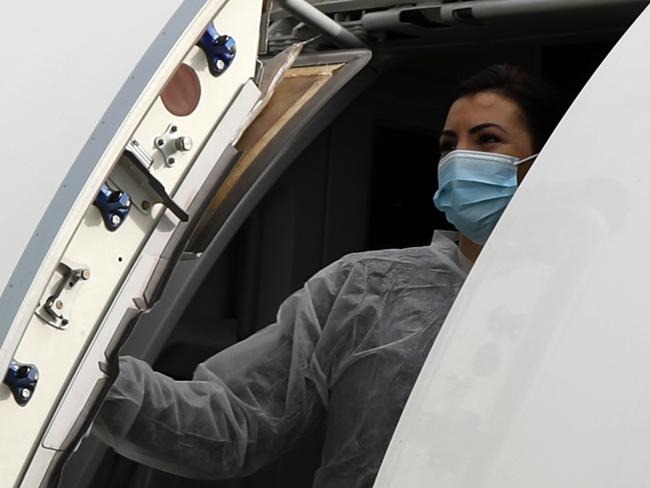
Airlines are going to try to control the typical crush, with some saying flight attendants will cue small groups when it’s their turn to stand up.
In Australia, the Transport Workers Union is leading calls for a national plan that deals with both safety and economic issues facing the aviation industry.
“Airlines doing their own thing will always mean they put profit over people,” TWU national assistant secretary Nick McIntosh said.
Find out what measures some airlines are taking to ensure your safety:
DOMESTIC
QANTAS AND JETSTAR
Measures include masks on board, hand-sanitising stations and enhanced aircraft cleaning, as well as more flexibility with booking cancellations. Contactless check-in, self-service bag drops and hand-sanitising stations at departure gates will also be in place under the airline’s Fly Well program which launches on June 12.
In addition, the airconditioning systems of all Qantas and Jetstar aircraft are already fitted with hospital-grade HEPA filters, which remove 99.9 per cent of all particles including viruses.
Canberra Airport is using thermal cameras to take the temperature of passengers as they pass through security.
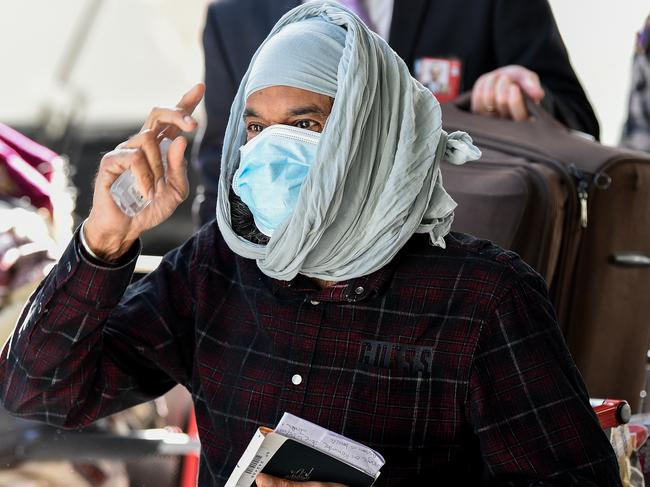
INTERNATIONAL
A United Nations agency that sets the rules for the industry, the International Civil Aviation Organisation, plans to deliver global guidelines by the end of May. They “will have to be flexible, adaptable and potentially reversible,” said Philippe Bertoux, chairman of the COVID-19 Aviation Recovery Task Force at ICAO.
As of now, there’s no agreed-upon benchmark infection rate or minimum health requirement to determine when a country can safely open its skies or when it must shut down. So individual jurisdictions are going out on their own.
The International Air Transport Association, which represents almost 300 carriers, found in an April survey that 69 per cent of recent travellers wouldn’t fly if it involved a 14-day quarantine.
Perhaps one of the biggest changes being considered for longer flights is more stop
overs – fewer direct flights because of lower demand for years to come.
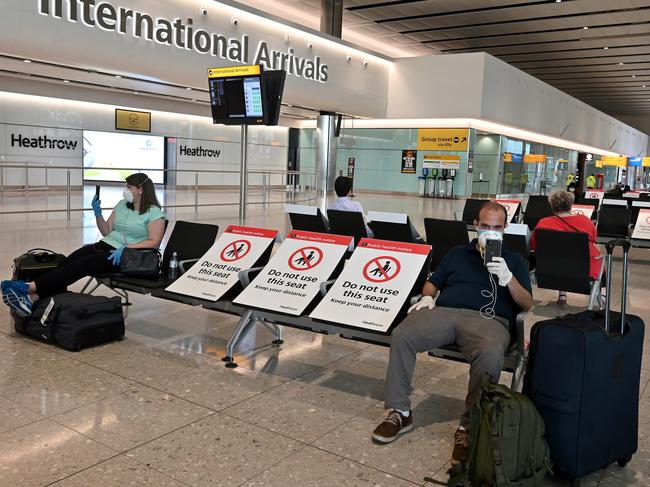
Some airlines are considering requiring passengers to sign health certifications, or to eventually carry “immunity passports” — documentation that a passenger has had, and recovered from, the virus.
Many airlines are removing in-flight magazines, scrapping meal services on shorter routes, and parking the duty-free cart.
Here are some of the specific measures being considered and adopted around the world for international travel:
USA
US carriers are among those requiring passengers and crew to wear facial coverings, and have also endorsed temperature checks.
Some passengers have been spotted wearing full-on hazmat-style suits. In-flight service on many airlines is now limited to bottles of water and a small packaged snack. At the airport, most of the coffee shops and stores are closed, and good luck finding a bar for that preflight martini.
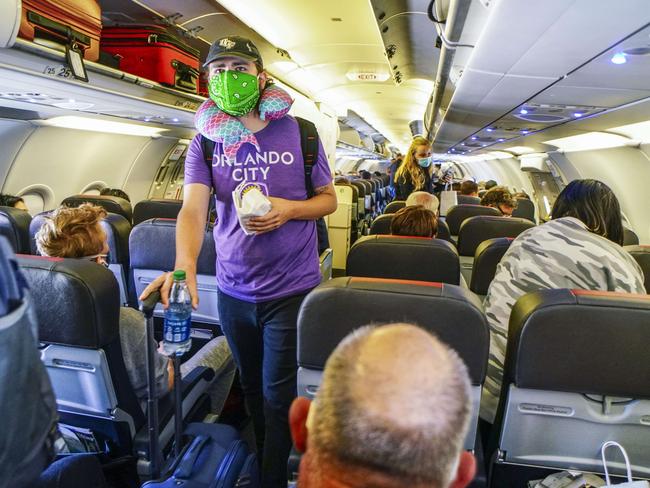
Airlines in the US – a country renowned for celebrating the individual liberties of its citizens – are bracing for a widespread backlash against telling customers to wear masks.
The CEO of Frontier Airlines, based in Denver, said “if someone is uncompliant, we will eventually divert an airplane.”
EUROPE
People catching planes in Europe will have to wear face masks, be prepared to be assessed in interview booths if they show signs of illness and say their farewells to family and friends outside the airport.
These are among some of the new guidelines issued for air travel by The European Union Aviation Safety Agency (EASA).
Instructions issued to airports and airlines also include: restrictions on hand luggage, reserving an on-board toilet for cabin crew and no on-board duty free or food trolleys.
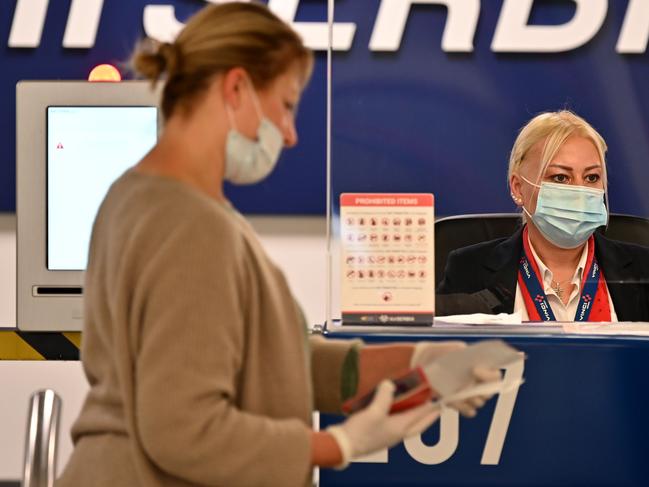
The (EASA) published 28 pages of guidelines that will radically alter the experience of flying, including physical distancing measures that Heathrow’s chief executive has previously said would be impossible to implement.
The UK has had no role in shaping EASA policy since the official Brexit date of 31 January but remains a member until the end of the year.
Airlines and airports are likely to adopt many of the guidelines, which cover every stage of the air travel process.
European airlines are largely resisting calls to leave the middle seat empty.
Air France is one of several carriers boarding passengers seated at the back of the aircraft first, to limit traffic jams in the aisle. Air France has also rolled out mandatory temperature checks before each departure, with passengers showing a temperature above 38 degrees
Celsius, or about 100 degrees Fahrenheit, prevented from boarding.
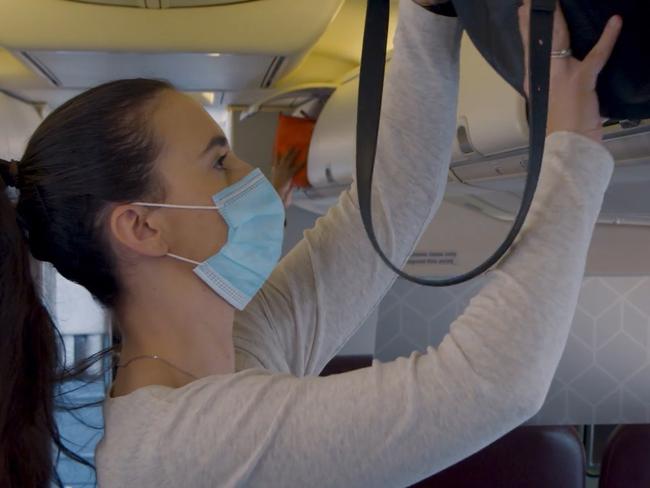
Carrier KLM in the Netherlands is requiring passengers from areas designated high-risk by the European Union to fill out a health declaration.
The areas include major airports in 20 US states.
The UK and Spain have said they’ll impose 14-day quarantines on most air travellers.
London’s Heathrow Airport is working with the UK government on a plan that would allow people flying in from countries like Australia with a low incidence of the virus to avoid the controversial quarantine restrictions.
John Holland-Kaye, chief executive of London Heathrow Airport which is rolling out Plexiglas screens at check-in desks, encouraging the use of face masks, and deploying more automation to limit the interaction between staff and passengers, wants consistent rules for social distancing at airports.
He is working with his counterparts at airports in Los Angeles, Hong Kong and Sydney to implement standardised procedures. “If we wait until some global organisation has agreed it for 172 countries, it’ll never happen,” he said.
Low cost Ryanair Holdings PLC, Europe’s biggest carrier by passengers, has done away with lines for the toilets. Passengers are now required to raise their hand to request permission from a cabin crew member before using them.
MIDDLE EAST
Emirates is returning its planes to the skies but the experience of flying will drastically change, with flight crew to wear masks, gloves and aprons, while passengers will be given personal hygiene kits and asked to wear masks on-board.
Flight crew will wear protective gear and distribute passenger travel hygiene kits containing, masks, gloves, antibacterial wipes and hand sanitiser.
The wearing of gloves and masks is compulsory in Dubai airport but only masks will be required on-board Emirates flights, as part of measures to resume international travel.
Boarding will be staggered, in line with social distancing rules and transiting passengers will be subjected to thermal screening.
ASIA
In Thailand, you cannot have food or water in flight and must wear a mask.
In Malaysia and Indonesia, the plane needs to be half-empty. And under Chinese rules, flights can be full, despite Chinese authorities recommending planes leave at least 25% of seats empty to allow space between passengers.
Temperature checks and additional security checks are also now standard procedure for flights out of Beijing.
Before Korean travellers can fly to China, they have to jump through a lot of hoops. Conditions of entry include two weeks of screening and a virus test at home, a two-day quarantine in China, and then another blood test.
It doesn’t seem to be putting people off. A representative for the Korea International Trade Association said it’s taking about 300 calls a day from local companies interested in the fast-track program.
PLACES AUSSIES WANT TO GO
Booking.com has revealed the top 10 domestic and international destinations Australians are dying to get back to.
While international destinations like Bali, London and Tokyo continue to inspire travel dreams for people across the country, it’s actually domestic stays that feature in about half of all those wishes listed by Aussies during this time of uncertainty, a jump from the same time last year when domestic properties accounted for less than a third of those wish listed.
Since Australia’s coronavirus restrictions began in March, the top wish-listed destinations for Australians are still traditional favourites of Bali, Indonesia, USA, UK, and Italy, highlighting that locals aren’t deterred from travelling to the countries worst affected by the pandemic.
Interestingly, New Zealand only placed at seventh on wish lists, posing the question whether Aussies will reconsider their dream destination if the “trans-Tasman bubble” opens potentially as early as June.
Closer to home, the top domestic destinations wish-listed by Australians included main centres such Melbourne, Sydney, The Gold Coast, Brisbane and Perth, suggesting that travel for business and staycations are at the forefront of travel imaginations.
Outside of the state capitals though, the wish list data showed that Aussies are eager to support their regional tourism hotspots including Cairns, Byron Bay and Port Douglas.
INTERNATIONAL
1) Indonesia
2) United States of America
3) Thailand
4) United Kingdom
5) Japan
6) New Zealand
7) Italy
8) Greece
9) Vietnam
10) France
DOMESTIC
1) Melbourne
2) Sydney
3) Gold Coast
4) Brisbane
5) Perth
6) Adelaide
7) Cairns
8) Byron Bay
9) Port Douglas
10) Canberra
DOMESTIC (EXCLUDING CAPITALS)
1) Gold Coast
2) Cairns
3) Byron Bay
4) Port Douglas
5) Noosa Heads
6) Airlie Beach
7) Newcastle
8) Mooloolaba
9) Coffs Harbour
10) Port Macquarie
Originally published as How the trans-Tasman bubble could affect states with strict borders controls

